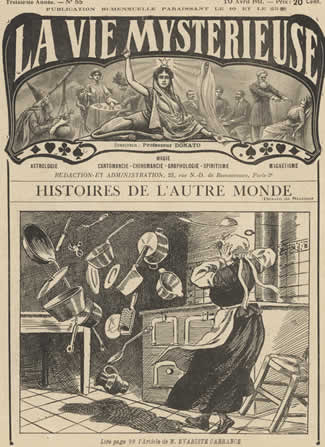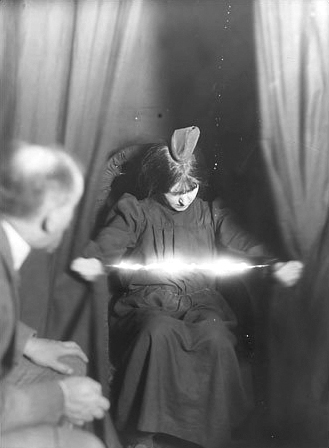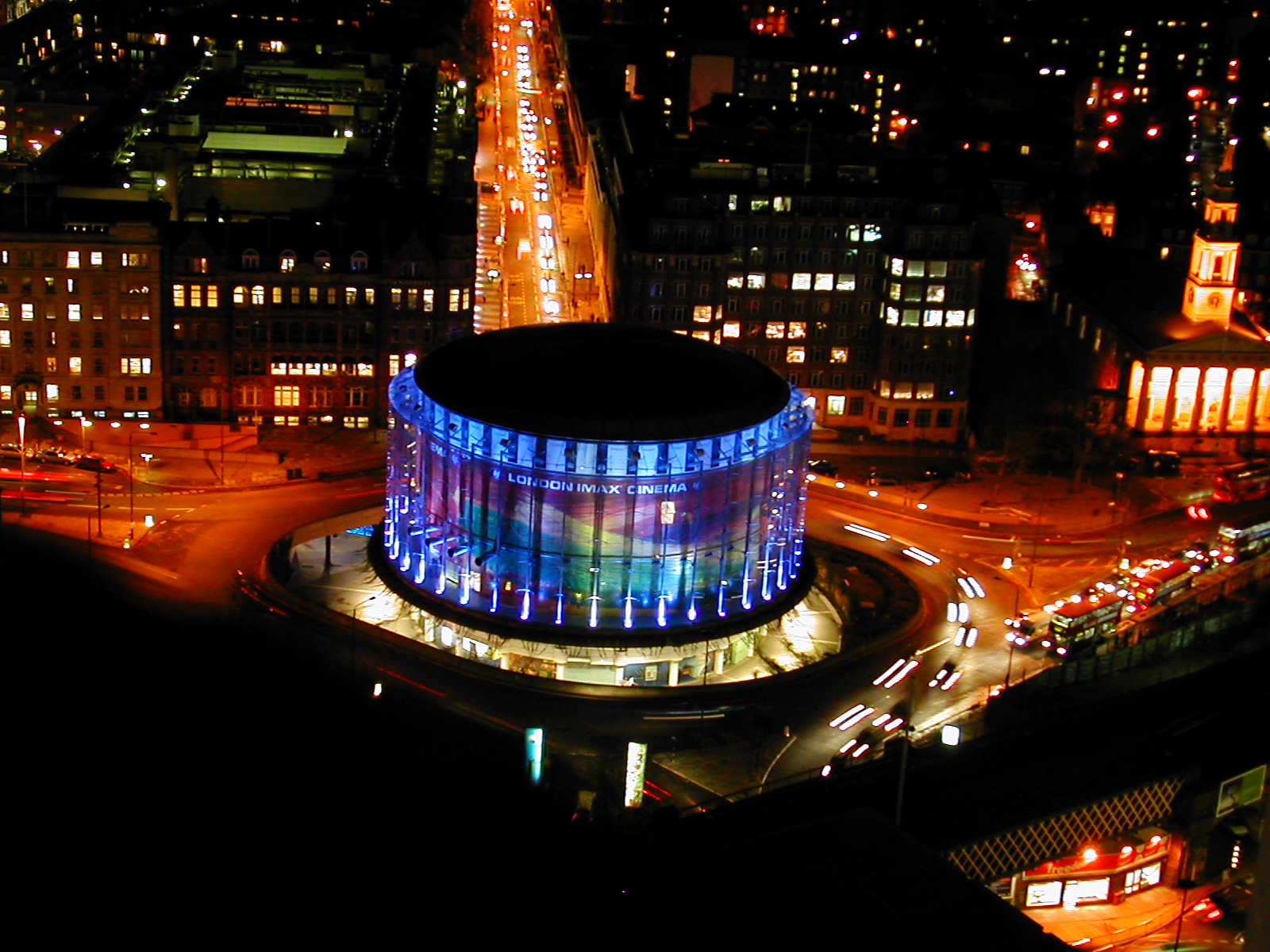|
Blithe Spirit (1945 Film)
''Blithe Spirit'' is a 1945 British supernatural black comedy film directed by David Lean. The screenplay by Lean, cinematographer Ronald Neame and associate producer Anthony Havelock-Allan, is based on Noël Coward's 1941 play of the same name, the title of which is derived from the line "Hail to thee, blithe Spirit! Bird thou never wert" in the poem " To a Skylark" by Percy Bysshe Shelley. The song " Always", written by Irving Berlin, is an important plot element in ''Blithe Spirit''. The film features Kay Hammond and Margaret Rutherford, in the roles they created in the original production, along with Rex Harrison and Constance Cummings in the lead parts of Charles and Ruth Condomine. While unsuccessful at the box office and a disappointing adaptation for the screen, according to Coward, it has since come to be considered notable for its Technicolor photography and Oscar-winning visual effects in particular and has been re-released several times, notably as one of the ten ... [...More Info...] [...Related Items...] OR: [Wikipedia] [Google] [Baidu] |
David Lean
Sir David Lean (25 March 190816 April 1991) was an English film director, producer, screenwriter, and editor, widely considered one of the most important figures of Cinema of the United Kingdom, British cinema. He directed the large-scale epics ''The Bridge on the River Kwai'' (1957), ''Lawrence of Arabia (film), Lawrence of Arabia'' (1962), ''Doctor Zhivago (film), Doctor Zhivago'' (1965), ''Ryan's Daughter'' (1970), and ''A Passage to India (film), A Passage to India'' (1984). He also directed the film adaptations of Charles Dickens novels ''Great Expectations (1946 film), Great Expectations'' (1946) and ''Oliver Twist (1948 film), Oliver Twist'' (1948), as well as the romantic drama ''Brief Encounter'' (1945). Originally a film editor in the early 1930s, Lean made his directorial debut with 1942's ''In Which We Serve'', which was the first of four collaborations with Noël Coward. Lean began to make internationally co-produced films financed by the big Hollywood studios, be ... [...More Info...] [...Related Items...] OR: [Wikipedia] [Google] [Baidu] |
Poltergeist
In German folklore and ghostlore, a poltergeist ( or ; ; or ) is a type of ghost or spirit that is responsible for physical disturbances, such as loud noises and objects being moved or destroyed. Most claims or fictional descriptions of poltergeists show them as being capable of pinching, biting, hitting, and tripping people. They are also depicted as capable of the movement or levitation of objects such as furniture and cutlery, or noises such as knocking on doors. Foul smells are also associated with poltergeist occurrences, as well as spontaneous fires and different electrical issues such as flickering lights. These manifestations have been recorded in many cultures and countries, including Brazil, Australia, the United States, Japan and most European nations. The first recorded cases date back to the 1st century. Skeptics explain poltergeists as juvenile tricksters fooling credulous adults. Etymology The word ''poltergeist'' comes from the German language words and ... [...More Info...] [...Related Items...] OR: [Wikipedia] [Google] [Baidu] |
Séance
A séance or seance (; ) is an attempt to communicate with spirits. The word ''séance'' comes from the French language, French word for "session", from the Old French , "to sit". In French, the word's meaning is quite general and mundane: one may, for example, speak of "" (). In English, however, the word came to be used specifically for a meeting of people who are gathered to receive messages from ghosts or to listen to a mediumship, spirit medium discourse with or relay messages from spirits. In modern English usage, participants need not be seated while engaged in a séance. Fictionalised conversations between the deceased appeared in ''Dialogues of the Dead'' by George Lyttelton, 1st Baron Lyttelton, George, First Baron Lyttelton, published in England in 1760. Among the notable spirits quoted in this volume are Peter the Great, Pericles, a "North-American Savage", William Penn, and Christina, Queen of Sweden. The popularity of séances grew dramatically with the founding of t ... [...More Info...] [...Related Items...] OR: [Wikipedia] [Google] [Baidu] |
Lympne
Lympne (), formerly also Lymne, is a village on the former shallow-gradient sea cliffs above the expansive agricultural plain of Romney Marsh in Kent. The settlement forms an L shape stretching from Port Lympne Zoo via Lympne Castle facing Lympne Industrial Park then via the main settlement to Newingreen in the north, centred west of Folkestone, west of Hythe and ESE of Ashford. History In Roman times Lympne was known as Portus Lemanis, from which (or from the British eponym of which) the English name is derived in identical written form to one of its Middle English written recorded forms. It lay at the end of the Roman road from Canterbury, known today as Stone Street. It had a Saxon Shore fort, and, according to a fifth-century source was garrisoned by a regiment originally raised in Tournai in northern Gaul. The remains are at the bottom of the south-facing cliffs; they lie in private land but can be visited due to a public footpath crossing the area. In ... [...More Info...] [...Related Items...] OR: [Wikipedia] [Google] [Baidu] |
Mediumship
Mediumship is the practice of purportedly mediating communication between familiar spirits or ghost, spirits of the dead and living human beings. Practitioners are known as "mediums" or "spirit mediums". There are different types of mediumship or spirit conduit (channeling), channelling, including table-turning, séance tables, trance, and ouija. The practice is associated with Spiritualism (movement), spiritualism and Kardecist spiritism, spiritism. A similar New Age practice is known as Channeling (New Age), channeling. Belief in psychic ability is widespread despite the absence of empirical evidence for its existence. Scientific researchers have attempted to ascertain the validity of claims of mediumship for more than one hundred years and have consistently failed to confirm them. As late as 2005, an experiment undertaken by the British Psychological Society reaffirmed that test subjects who self-identified as mediums demonstrated no mediumistic ability. Mediumship gained popu ... [...More Info...] [...Related Items...] OR: [Wikipedia] [Google] [Baidu] |
Sight & Sound
''Sight and Sound'' (formerly written ''Sight & Sound'') is a monthly film magazine published by the British Film Institute (BFI). Since 1952, it has conducted the well-known decennial ''Sight and Sound'' Poll of the Greatest Films of All Time. History and content ''Sight and Sound'' was first published in Spring 1932 as "A quarterly review of modern aids to learning published under the auspices of the British Institute of Adult Education". In 1934, management of the magazine was handed to the nascent British Film Institute (BFI), which still publishes the magazine today. ''Sight and Sound'' was published quarterly for most of its history until the early 1990s, apart from a brief run as a monthly publication in the early 1950s, but in 1991 it merged with another BFI publication, the ''Monthly Film Bulletin'', and started to appear monthly. In 1949, Gavin Lambert, co-founder of film journal ''Sequence'', was hired as the editor, and also brought with him ''Sequence'' editor ... [...More Info...] [...Related Items...] OR: [Wikipedia] [Google] [Baidu] |
British Film Institute
The British Film Institute (BFI) is a film and television charitable organisation which promotes and preserves filmmaking and television in the United Kingdom. The BFI uses funds provided by the National Lottery to encourage film production, distribution, and education. It is sponsored by the Department for Culture, Media and Sport, and partially funded under the British Film Institute Act 1949. Activities Purpose The BFI was established in 1933 to encourage the development of the arts of film, television and the moving image throughout the United Kingdom, to promote their use as a record of contemporary life and manners, to promote education about film, television and the moving image generally, and their impact on society, to promote access to and appreciation of the widest possible range of British and world cinema and to establish, care for and develop collections reflecting the moving image history, heritage and culture of the United Kingdom. Archive The BFI maintain ... [...More Info...] [...Related Items...] OR: [Wikipedia] [Google] [Baidu] |
Journal Of British Cinema And Television
The ''Journal of British Cinema and Television'' is a quarterly academic journal published by Edinburgh University Press in May, August and December of each year. It was established in 2004. Themed issues alternate with regular issues and every issue contains papers, book reviews, interviews and conferences. See also * List of film periodicals Film periodicals combine discussion of individual films, genres and directors with in-depth considerations of the medium and the conditions of its production and reception. Their articles contrast with film reviewing in newspapers and magazines whi ... References Academic journals established in 2004 Quarterly journals English-language journals Media studies journals Edinburgh University Press academic journals {{media-journal-stub ... [...More Info...] [...Related Items...] OR: [Wikipedia] [Google] [Baidu] |
Visual Effects
Visual effects (sometimes abbreviated as VFX) is the process by which imagery is created or manipulated outside the context of a live-action shot in filmmaking and video production. The integration of live-action footage and other live-action footage or CGI elements to create realistic imagery is called VFX. VFX involves the integration of live-action footage (which may include in-camera special effects) and generated-imagery (digital or optics, animals or creatures) which look realistic, but would be dangerous, expensive, impractical, time-consuming or impossible to capture on film. Visual effects using computer-generated imagery (CGI) have more recently become accessible to the independent filmmaker with the introduction of affordable and relatively easy-to-use animation and compositing software. History Early developments In 1857, Oscar Gustave Rejlander, Oscar Rejlander created the world's first "special effects" image by combining different sections of 32 negatives into ... [...More Info...] [...Related Items...] OR: [Wikipedia] [Google] [Baidu] |
Academy Awards
The Academy Awards, commonly known as the Oscars, are awards for artistic and technical merit in film. They are presented annually by the Academy of Motion Picture Arts and Sciences (AMPAS) in the United States in recognition of excellence in cinematic achievements as assessed by the Academy's voting membership. The Oscars are widely considered to be the most prestigious awards in the film industry. The major award categories, known as the Academy Awards of Merit, are presented during a live-televised Hollywood, Los Angeles, Hollywood ceremony in February or March. It is the oldest worldwide entertainment awards ceremony. The 1st Academy Awards were held in 1929. The 2nd Academy Awards, second ceremony, in 1930, was the first one broadcast by radio. The 25th Academy Awards, 1953 ceremony was the first one televised. It is the oldest of the EGOT, four major annual American entertainment awards. Its counterparts—the Emmy Awards for television, the Tony Awards for theater, and ... [...More Info...] [...Related Items...] OR: [Wikipedia] [Google] [Baidu] |
Technicolor
Technicolor is a family of Color motion picture film, color motion picture processes. The first version, Process 1, was introduced in 1916, and improved versions followed over several decades. Definitive Technicolor movies using three black-and-white films running through a special camera (3-strip Technicolor or Process 4) started in the early 1930s and continued through to the mid-1950s, when the 3-strip camera was replaced by a standard camera loaded with single-strip "monopack" color negative film. Technicolor Laboratories were still able to produce Technicolor prints by creating three black-and-white matrices from the Eastmancolor negative (Process 5). Process 4 was the second major color process, after Britain's Kinemacolor (used between 1909 and 1915), and the most widely used color process in Cinema of the United States, Hollywood during the Golden Age of Hollywood. Technicolor's #Process 4: Development and introduction, three-color process became known and cele ... [...More Info...] [...Related Items...] OR: [Wikipedia] [Google] [Baidu] |









